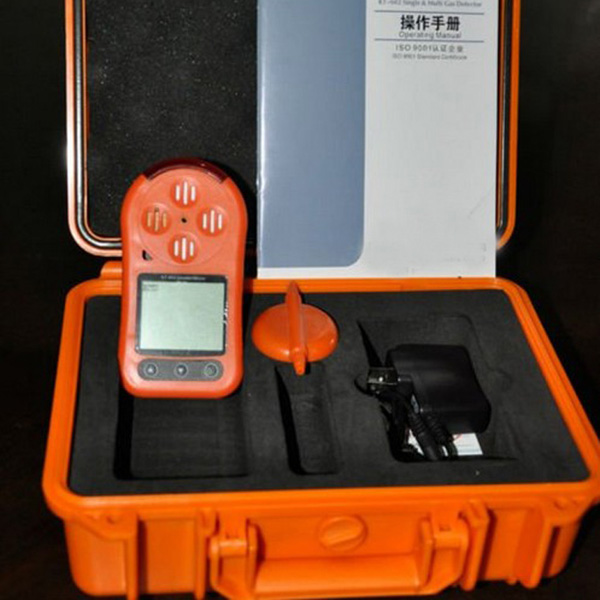

market@chinacoalintl.com
With the advancement of technology, many gases have been applied to many fields, which has accelerated the production efficiency of enterprises. However, if a gas leak occurs during the use of the gas, an explosion or poisoning accident will occur. And some production processes also produce a variety of waste gas, which not only pollutes the environment, but also endangers people's lives. Therefore, a gas detection alarm is required to detect the concentration of the gas.
The gas detection alarm can monitor the concentration of toxic and harmful gases in the atmosphere in real time. When the concentration of the gas to be tested reaches the preset value of the instrument, the alarm will immediately sound and light alarm, or linkage exhaust device to remind people to evacuate or take effective action. Rescue measures. So, where are the gas detection alarms applied?
First, business and industry
Regarding the kitchen places of hotels, restaurants and hotels, according to the "Safety Production Law of the People's Republic of China" and other relevant laws and regulations: All units that produce, store and use inflammable and explosive materials must comply with the "Code for Design of Building Fire Protection", 10.3.2" A Class A plant and place where flammable gas and flammable steam are distributed shall be provided with a flammable gas concentration leak detection alarm device, and a flammable gas detection alarm shall be installed reasonably; the gas, gas or artificial gas used in the kitchen of the hotel shall be flammable and explosive. Gas, and restaurant restaurant staff gathered more, is the key place to monitor fire and explosion accidents, so the installation of flammable gas detection alarm is a must.
Mainly produces gases: methane, carbon monoxide, hydrogen, liquefied gas.
Second, the biogas pool
The construction of biogas digesters in various places not only improves the rural health, but also reduces the burden on farmers and protects the ecology. It is widely welcomed by farmers. However, the pH value of the fermentation materials in biogas digesters requires 6.8~7.5, and the biogas content generated is also required to be tested.
Main tests: methane, carbon dioxide, pH.
Third, air quality control
With the increasing awareness of safety and health, people are increasingly eager to control the air quality of underground garages, rail transit and other spaces or central air conditioning automatic ventilation. In the fields of municipal pipe network, sewage treatment, urban pipe network, etc., municipalities need to use gas detectors to detect chlorine gas, hydrogen sulfide and other gases in tap water treatment and sewage treatment.
Fourth, iron and steel smelting
The steel industry is one of the important raw material industries in the country, but in the smelting production process, a large number of by-products "gas" (ie, coke oven gas, blast furnace gas, converter gas) are generated, because some people have insufficient understanding of gas hazards (carbon monoxide and Gas,) Insufficient protection, resulting in gas poisoning or explosion accidents. Therefore, it is necessary to install a gas detector to detect the gas concentration in the metallurgical industry.
The main gases are: carbon monoxide (CO), methane (CH4), hydrogen (H2), hydrogen sulfide (H2S), benzene (C6H6), ammonia (NH3), carbon disulfide (CS2), oxygen (O2), carbon dioxide ( CO2), nitrogen (N2), naphthalene (C10H8), phenol, and the like.
Fifth, the power industry
The power industry involves multiple fields and has a wide market space to detect sulphur hexafluoride gas from power substations.
The main gases are: ammonia, chlorine, hydrogen sulfide, sulfur hexafluoride, oxygen, combustible gas, hydrogen, carbon monoxide, sulfur dioxide, nitrogen oxides, etc.
Sixth, polysilicon industry
The production process of polycrystalline silicon is mainly composed of high-purity quartz (reduced by high-temperature coke) - industrial silicon (pickling) - silicon powder (added HCL - SiHCL3 (by crude distillation) - high-purity SiHCL3 (and hydrogen-reactive CVD) Process) - high purity polysilicon.
Seven, the coal industry
Coking industry, coal gasification, ammonia synthesis, coal-based methanol, coal-based synthetic oil, coal chemical co-production have a wide range of requirements for gas alarms, especially for gas detectors such as sulfur dioxide, hydrogen sulfide, carbon monoxide, chlorine, and ammonia. very large.
Mainly produces gases: carbon monoxide, hydrogen sulfide, methane, sulfur dioxide, chlorine, ammonia.
In addition, the chlor-alkali industry, fine chemicals, aluminum industry, agricultural greenhouses, food cold storage, urban automobile exhaust and other fields require gas detection, and gas detection alarms are required.

© Shandong China Coal Group. © 2017
Address: No. 11, North of Kaiyuan Road, High-tech Zone, Jining City, Shandong Province, China
sales@chinacoalintl.com
Executive Editor: Zhang Wen / Editor: Linda Zhang